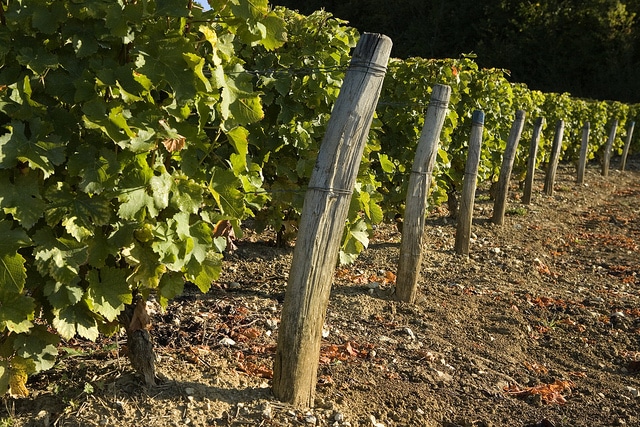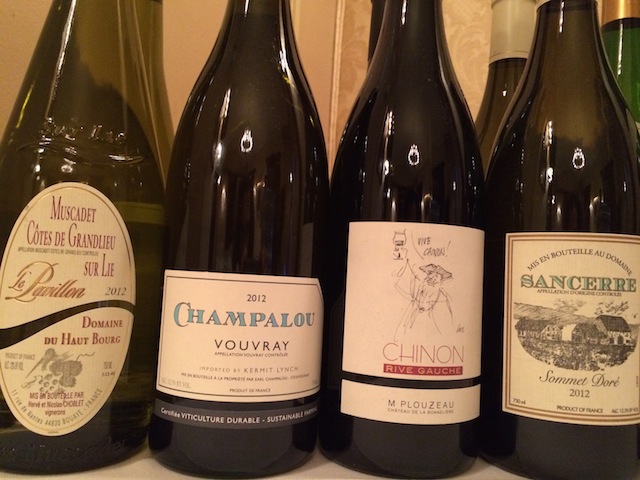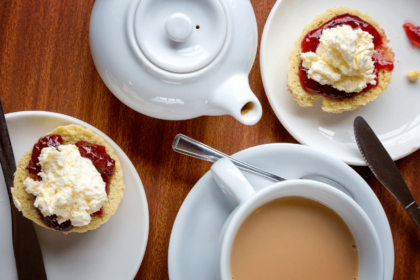
No education in wine would be complete without learning about France’s Loire Valley, which is exactly why the Sommelier Society of America spends a class discussing this world-renowned region. Before this class, I’d always viewed good French wine as being unaffordable, but as our sommelier certification course instructor Stephanie Frederick, a Wine And Spirits Education Trust diploma holder and member of the exclusive Bons Entonneurs de Rabelaisens in Chinon, pointed out, some of the world’s most value-friendly wines come from this region.
Ms. Frederick began the class with a list of the biggest wine myths, beginning with the idea that California was the epicenter of the wine world. While there are some great wines coming from there, if you’re going to crown one destination King of Wine, it has to be France.
The Loire Valley is composed of a number of different wine regions within the wine region, each home to its unique unique climate and terroir, as well as grapes. Within these regions, 69 distinct appellations dictate which grapes can be grown where and what methods should be used to make the wine. While you’ll find much diversity in the landscape, one thing you can almost always count on is that a Loire Valley wine will be light and fresh, as well as lower in alcohol content due to the cooler climate. And because cooler climates tend to produce lighter, more acidic wines — warmer climates ripen fruit more easily, leading to higher sugar contents — whites are popular here, as acid is important in giving whites their zest and crispness on the palate.

Nantais
One of the wine regions you’ll find within the Loire Valley is Nantais, which is renowned for its dry, light-bodied white Muscadet wine. All Muscadet comes from the Melon de Bourgogne grape — which used to be known as Muscadet — and due to the terroir near the Atlantic Ocean has an rocky yet briny aroma and taste. This wine is meant to be drank young, and its refreshing nature lends itself well as an accompaniment to seafood.
Sometimes, the Melon de Bourgogne grape is made into Muscadet Sur Lie (lie means lees in French), meaning the liquid was left on the lees — or sediment of dead yeast and residual sugar — to give the wine a fuller body and, not surprisingly, a slightly yeasty essence (just make sure when tasting you don’t use the word yeast, but instead descriptions like brioche and just-baked bread). This is the style of wine you’ll typically find in Sevre-et-Maine, an appellation encompassing 20,305 acres (8,217 hectares) that accounts for 80% of all Muscadets.

Anjou-Samur
While Champagne is only made in Champagne, France, Anjou-Samur is known for having the most important sparkling wine outside of Champagne. According to Ms. Frederick, the grapes you’ll find here include Chenin Blanc, Cabernet Blanc, Cabernet Franc, Gamay, Malbec and Grolleau. Chenin Blanc is particularly popular in this region, creating a wine that’s naturally tart and high in acid, characterized by notes of tropical fruit and honey. And while the best Chenin Blanc wines from this region are sweet, you’ll also find some decent dry varieties. In terms of reds, Cabernet Franc is the focus, and no trip to the region would be complete without sampling the Cabernet d’Anjou, a high-quality, fruit-forward wine composed of Cabernet Franc and Cabernet Sauvignon that has strong tannins, fresh red fruit aromas, and a slight white pepper on the finish.

Touraine
Touraine is another appellation in the Loire Valley, covering the entire district of Touraine. Here you’ll find a large spectrum of wines, from dry, fruity reds to complex whites that excite the palate (whites make up about 50% of the wines from Touraine). Here they use a large variety of grapes: Gamay, Sauvignon Franc, Cabernet Franc and Chenin Blanc. In the Loire Valley, the most important red wine you’ll find is from Touraine and is the Chinon appellation, which is surprisingly different from its neighbors — so much so that it’s sometimes grouped separately from Touraine along with Bourgueil. Chinon is known for being one of the few Loire appellations to produce mainly reds — from Cabernet Franc — with these wines being typically dry and light to medium bodied with spiced fruit flavors and a crisp acidity. Also notable from Touraine is Vouvray, a white wine crafted from Chenin Blanc that can range from dry to sweet and usually has notes of quince, rose, apricot and honey depending on its maturity.

The Central Vineyards
In the Central Vineyards of the Loire Valley — which aren’t all actually in the center of the region — you’ll find a focus on Sauvignon Blanc and Pinot Noir — as well as some of the world’s trendiest wines, including Sancerre (made with Sauvignon Blanc and Pinot Noir) and Pouilly-Fume (made with Sauvignon Blanc). While Sancerre is a bit more in vogue than the Pouilly-Fume — as well as more expensive — both have similar characteristics, including being crisp, herbacious and having a slight tang of cat pee. Yes, you read that right. Before you start gagging, that scent is attributed with under ripe/cool climate Sauvignon Blanc grapes. And while bathroom words are typically avoided when describing wines — especially esteemed ones — cat’s pee is an acceptable term in the world of vino.

The Tasting
No wine class would be complete without a tasting. While some of the tastings were Alsace wines — this was the focus of half the class — the rest represented the many flavors of The Loire. Take for example our first tasting, a 2012 Domaine du Haut Bourg Muscadet Cotes de Grand Lieu Sur Lie Le Pavillon made what the famous Muscadet grape. As Ms. Frederick explained, this wine in particular is classified as a classic. And as soon as I smelled the fresh cut apple and lemon and tasted its crisp, tart characteristics, I began to long for the approaching summer.
The next wine we tried was very different, despite being from the same region, a Vouvray, Champalous 2012, made with the Chenin grape. This wine, while also acidic with hints of lemon, was much less intense in flavor. According to Ms. Frederick, it wasn’t a great example as it didn’t showcase what the grape was truly capable of.
Of course, a Chinon was on the list, specifically a 2012 “Rive Gauche” Rouge, M. Plouzeau. Because of the high minerality and bone dry finish it seemed like an Old World wine, and was quite pleasant with spice on the nose and high acid content.
I also had the chance to test this cat’s pee theory, as a Sancerre Sommet Dore was part of the tasting itinerary. Sure enough, as soon as I took a whiff I pictured my two cats — Madison and Annie — and couldn’t get the image out of my mind. That being said, I absolutely love the herbaceous quality of Sauvignon Blanc and the hints of grapefruit in this one made the experience a delight.
And for a taste of The Loire’s Pinot Noir, we sampled Famille Laurent’s Saint-Pourcain Rouge. This delicious wine had a delicious roundness with hints of strawberry jam — typical of Pinot Noir — with some earthiness and elegant fruits.
Have you visited or sampled the wines from The Loire Valley of France? What was your experience like? Please share in the comments below.
Jessica Festa
Latest posts by Jessica Festa (see all)
- A Culturally-Immersive Adventure In Mongolia’s Altai Mountains - Jul 8, 2023
- This Recipe Sharing Platform Supports Women In The Culinary Industry (Labneh Recipe Included!) - Nov 5, 2020
- Hiking The Mohare Danda Community Eco-Trek In Nepal - Jun 3, 2020
- 6 Important Questions For Choosing A Responsible Yoga Retreat - May 18, 2020
- How To Create & Grow A Profitable Blogging Business (Ethically) - Jan 18, 2020




